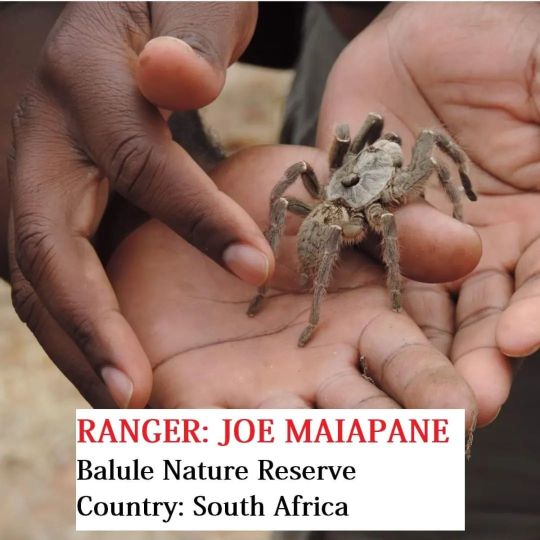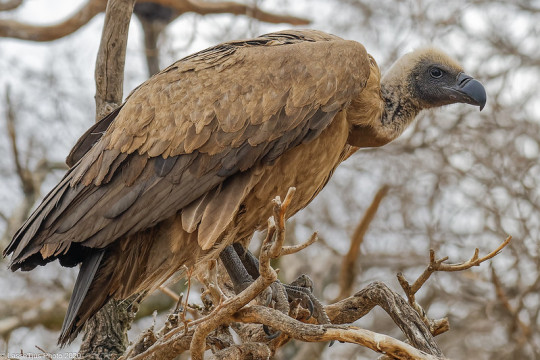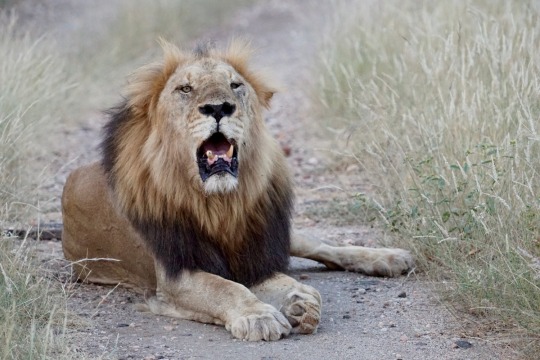#hoedspruit
Explore tagged Tumblr posts
Text

The Klaserie Private Nature Reserve, Hoedspruit, South Africa
Joe McDaniel
2 notes
·
View notes
Photo

🐘🕷 In the Balule Nature Reserve in the northeast of South Africa we spoke with Ranger JOE MAIAPANE from Greenfire. Check the link below with the article and the interview. He told us about his work in the park, about the wildlife situation and gave us insights to the dangerous hunter problems and the difficulties in protecting the animals. Read more in the reportage. - @driftersadventours - Balule Nature Reserve, Limpopo - [SOUTH AFRICA🇿🇦] _____________________________________________ . . ↘️ Check out the reportage and the interview about the Balule Reserve: http://vagabundler.com/south-africa/balule-nature-reserve ↗️ . . _____________________________________________ . . #southafrica #spider #naturepark #greenfire #driftersadventours #naturereserve #ranger #wildlife #interview #animalprotection #limpopo #antipoachingunit #stoppoaching #andyscamp #krugerpark #vagabundler #maruleng #hoedspruit #adventure #apnr #podcast #travelgram #krugernationalpark #balule #safari #inthebush #olifantsriver #impala #kudus #gamewatch (hier: Kruger National Park, South Africa) https://www.instagram.com/p/CoewrbbrWPK/?igshid=NGJjMDIxMWI=
#southafrica#spider#naturepark#greenfire#driftersadventours#naturereserve#ranger#wildlife#interview#animalprotection#limpopo#antipoachingunit#stoppoaching#andyscamp#krugerpark#vagabundler#maruleng#hoedspruit#adventure#apnr#podcast#travelgram#krugernationalpark#balule#safari#inthebush#olifantsriver#impala#kudus#gamewatch
2 notes
·
View notes
Text

A cape vulture (Gyps coprotheres) at the Hoedspruit Endangered Species Centre, South Africa
by Lars Tjusberg
#cape vulture#vultures#raptors#birds#gyps coptrotheres#gyps#accipitridae#accipitriformes#aves#chordata#hoedspruit endangered species centre
1K notes
·
View notes
Text

Savanna Twing Snake or Southern Vine Snake (Thelotornis capensis), defensive puffing, family Colubridae, from Hoedspruit, Limpopo, South Africa
Venomous.
Rear-fanged, but potently venomous.
Famously, the herpetologist Robert Mertens died in 1975, from a bite from this snake. It was not, at that time, known to be deadly by western scientists.
photograph by Johan Marais
350 notes
·
View notes
Text
Modjadji Estate, outside of Hoedspruit in South Africa. Sometimes on a hot day, you just want to wallow in mud.
4 notes
·
View notes
Photo

2 December 2015 | Prince Harry visits the South African Wildlife College in Hoedspruit, South Africa. Prince Harry is visiting South Africa as part of a Royal Tour that has included the opening of a new Charity Centre for children in Lesotho (Sentebale's Mamohato Children's Centre) and includes stops in Durban, Cape Town, Kruger National Park and Johannesburg. (c) Chris Jackson/Getty Images
2 notes
·
View notes
Link
Embark on a breathtaking journey with us as we bid farewell to the sun, casting hues of red, gold, and orange over the stunning Drakensberg mountains. Discover the unparalleled thrill of seeking majestic wildlife, including Elephants, Black and White Rhino, Lions, Leopard, Hyena, African Wild Dog, Hippo, Cheetah, and more, in our private 5,500-hectare game reserve. Experience it all from the comfort of an open safari vehicle, guided by an expert unlocking the secrets of the wilderness with all your senses—an adventure that etches memories into your heart forever. Indulge in your favorite refreshment and snacks at one of our scenic viewpoints while immersing yourself in the soothing symphony of night sounds. Allow us to take you on a journey, getting up close and personal with the very best of what nature has to offer. #Tours2Go #ToursToGo
0 notes
Text
Route advice Phalaborwa/Hoedspruit to Berg & Dal
Forum: Mpumalanga Posted By: Indabelly Post Time: 2024/11/21 at 07:53 PM http://dlvr.it/TGJr92
0 notes
Text
Ecosystem Engineers

Photo credit: myself (2023). Juvenile Loxodonta africana- Hoedspruit, South Africa
There are some animals that have minimal impact on their surroundings, and there are some, whose habitats adapt entire ecosystems. These animals are often called ecosystem engineers, and can have enormous impacts on landscapes. Think about beavers here in Ontario, building dams that turn streams into wetlands. The beaver fells trees and obstructs streams, which slows the flow of the water. After building the dam, the pond starts to take shape, and it eventually forms wetlands that support life in all its richness. Beaver wetlands are also commonly thought of as biodiversity hotspots, where fish, amphibians, birds, and plants thrive in these wet environments (Baker & Hill, 2003). The standing water they provide helps to recharge groundwater and reduces flooding further downstream, impacts far beyond their immediate area surrounding their dams. Basically, beaver ponds serve as a natural water filter. While running through their dams, sediments settle out, and the pollutants get caught. Improvement of water quality downstream is observed. This has had an impact on the water systems through which beaver is able to show its ability in shaping 'landscapes' for the benefit of the whole ecosystem, ranging from microorganisms down to microscopic organisms (Naiman et al., 1988).
Where some people regard beavers for their home improvements, other ecosystem engineers, such as elephants, can be more controversial. When I was in South Africa, it was a big challenge to control the movement of elephants between reserves. Some reserves did not want elephants as they were prioritising their trees and other vegetation. The reserves that did have elephants were visibly trampled. While this is often viewed as devastation by the African tourism and reserve industry, elephants have a critical role in their savannah ecosystems. By knocking over trees, elephants prevent wooded areas from taking over the grasslands. They maintain open landscapes upon which many species rely for life. This gives more light to the ground and attracts grasses that feed herbivores like zebras and antelopes. Strong predators benefit in turn from abundant prey. Additionally, trails made by elephants through thick vegetation set natural pathways that other animals will use. Waterholes, formed by the involvement of elephants digging into dry riverbeds during droughts, give lifesaving sources of water to smaller animals. So, it looks really destructive, but in reality, it maintains a balance, soils the ecosystem, and makes it diverse and resilient (Pringle, 2006).
A less known example of an ecosystem engineer that I like, is the prairie dog. They are small rodents native to the grasslands of North America. Through their instinctive digging, they create extensive burrow systems that alter soil aeration and water infiltration. These burrows offer a refuge for a large variety of other species, including burrowing owls, snakes, and insects. These prairie dog colonies have been known to increase plant diversity since their grazing habits do not allow any particular species of plants to become dominant in the area where they are located (Bangert & Slobodchikoff, 2006).
Ecosystem engineers remind us that in nature, complexity is essential: each population contributes to a grand balance that allows life to thrive across habitats.
Next time you observe an animal, I encourage you to reflect on the ripple effects of their presence. These aren’t just animals going about their routines; they’re vital builders of nature’s resilience. Their presence underscores how interconnected life is, with each species playing a unique role in sustaining the diverse environments we all depend on.
—
Baker, B. W., & Hill, E. P. (2003). Beavers (Castor canadensis). In Wild mammals of North America: Biology, management, and conservation (2nd ed., pp. 288-310). Johns Hopkins University Press. https://www.sierraforestlegacy.org/Resources/Conservation/SierraNevadaWildlife/North%20American%20Beaver/Beaver-Baker%20and%20Hill%20Beaver%20Chapter%202003.pdf
Bangert, R. K., & Slobodchikoff, C. N. (2006). Conservation of prairie dog ecosystem engineering. Journal of Arid Environments, 67(1), 100-107. https://www.wellbeingintlstudiesrepository.org/envncon/4/
Naiman, R. J., Johnston, C. A., & Kelley, J. C. (1988). Alteration of North American streams by beaver. Bioscience, 38(11), 753-762. https://academic.oup.com/bioscience/article-abstract/38/11/753/294302
Pringle, R.M., (2006). Elephants as agents of habitat creation for small vertebrates at the patch scale. A framework for community and ecosystem genetics: from genes to ecosystems. Nature Reviews Genetics, 7(7), 510–523 https://pubmed.ncbi.nlm.nih.gov/18376543/
0 notes
Text
Leopard attacks men at South Africa Air Force base

Leopard attacks men at South Africa Air Force base
A leopard attacked two men at a South African Air Force base that borders the world-famous Kruger National Park.
One of the men, a uniformed Air Force member, was attacked while out for a run.
The other, a civilian working at the base, encountered the leopard while on a walk, an air force spokesman said.
The two individuals were admitted to the hospital with scratches but no major injuries, Brig. Gen. Donavan Chetty told the BBC.
One has since been discharged, and the other is due to leave on Thursday.
On Wednesday, the leopard was captured and relocated to a sanctuary around 100 km (62 miles) from the Hoedspruit Air Force Base, following last ..................................
0 notes
Text
Snake Catcher's 'Insane' Removal of Black Mamba From House Goes Viral
New Post has been published on https://petn.ws/jHJNz
Snake Catcher's 'Insane' Removal of Black Mamba From House Goes Viral
A video of a snake catcher removing a black mamba from a house in South Africa has gone viral on TikTok, garnering over 5 million views. Hoedspruit Reptile Centre’s footage features senior curator Jessica Joubert stoically relocating the snake from a windowsill in Hoedspruit. She swiftly grabs the snake with her bare hand, and it […]
See full article at https://petn.ws/jHJNz #ExoticPetNews
0 notes
Text

Rough-scaled Plated Lizard (Broadleysaurus major), family Gerrhosauridae, Hoedspruit, Limpopo, South Africa
photograph by Johan Marais - World of Reptiles
24 notes
·
View notes
Text

Caracal
These handsome okes can jump over three meters in the air, and use this agility to hunt birds.
Hoedspruit Air Force Base in South Africa is protected by caracals. To prevent the many wild birds from being killed by aircraft, caracals patrol the runway.
7 notes
·
View notes
Photo

2 December 2015 | Prince Harry learns bush ranger skills as he visits the South African Wildlife College in Hoedspruit, South Africa. Prince Harry is visiting South Africa as part of a Royal Tour that has included the Opening of a new Charity Centre for children in Lesotho (Sentebale's Mamohato Children's Centre) and includes stops in Durban, Cape Town, Kruger National Park and Johannesburg. (c) Chris Jackson/Getty Images
2 notes
·
View notes
Text
Get Out the Big Lens
We embarked from Cape Town early March 5th, hopping a flight up to Hoedspruit. From there it was less than an hour’s drive to Milima Safari Lodge. As we bounced down the road toward the lodge, we passed a giraffe (not sure who looked more surprised, the giraffe or the pile of us). And as we checked in and signed waivers by the pool, we watched as a family of elephants finished up their afternoon…

View On WordPress
0 notes
Text
Route advice from the East Rand to Hoedspruit / Kruger Orpen Gate
Forum: Mpumalanga Posted By: Paul#25 Post Time: 2024/10/15 at 07:38 PM http://dlvr.it/TFN1xL
0 notes